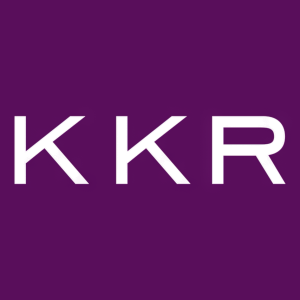KKR Releases 2022 Mid-Year Global Macro Outlook: Walk, Don’t Run
KKR has released its 2022 mid-year outlook by CIO Henry McVey, who emphasizes a shift in the macroeconomic narrative impacting corporate profits. Notably, McVey projects a 5% contraction in S&P 500 earnings per share for 2023, contrasting with the consensus of 9% growth. The firm expects prolonged high oil prices and persistent inflation pressures shifting from goods to services. Key investment themes include pricing power, collateral-based cash flows, and the energy transition, projected to be a $1.5-2.0 trillion annual growth opportunity.
- KKR forecasts significant growth opportunities in energy transition valued at $1.5-2.0 trillion annually.
- Emphasis on companies with strong pricing power favorable in the current economic climate.
- Projected 5% contraction in S&P 500 earnings per share for 2023, diverging from broader market expectations.
- High oil price forecasts at $115 and $100 per barrel for 2023 and 2024, raising concerns about inflation.
In the piece, McVey and his team make a number of out-of-consensus calls, which include:
- Broad-based margin degradation not yet priced in: McVey forecasts that S&P 500 earnings per share will contract five percent in 2023 versus a consensus expectation of nine percent growth.
-
Oil prices higher for longer: At
$115 $100 $24 $19
-
Inflation headwinds shifting from goods to services: The team forecasts goods deflation in the
U.S. in 2023, but expects services, food, and energy inflation to remain elevated.
-
Materially higher yields for the German bund in 2023: the team’s forecast for the German bund in 2023 is much higher than the market expects (
2.0% versus1.15% ).
-
Divergence between the economic and market recovery in
China :China is in contraction according to the team’s proprietary cyclical indicator, with no ‘V-shaped’ recovery like in 2020. However, the market now seems to have largely discounted the tough economic environment that the team is forecasting.
McVey and his team continue to believe that a combination of excess stimulus, heightened geopolitical risks, sticky supply side constraints and a changing relationship between stocks and bonds, have created a new investing regime. As such, they urge investors to pay close attention to the following mega themes as they navigate this new environment:
- Pricing Power: Higher input costs and supply chain pressures have created an environment that strongly favors companies with pricing power and unit volume growth.
- Collateral-Based Cash Flows: Given the unusual backdrop of stickier-than-expected inflation, excess stimulus, and higher commodity prices, demand for collateral-based cash flows, including Infrastructure and Real Estate, is likely to accelerate more than many investors now think.
- The Security of Everything: Fragmentation of global trade and supply chains will likely add a new dimension to geopolitical rivalries as more industries and sectors, including healthcare, energy, communications, and data, become “strategic” from a national security perspective.
-
Energy Transition: Energy transition is an approximately
$1.5 -2.0 trillion
-
Revenge of Services:
U.S. goods-buying is still running above trend while services is running four percent below trend. In light of this, now may be the time to flip exposures to the underdog category, services.
- Efficiency: Automation/Digitalization/Testing: We expect to see a boom in key areas of innovation as well as a continued shift to decentralization across many sectors.
In light of these themes, McVey and his team highlight the following conclusions for asset allocation:
- In the liquid markets, favor Credit over Equities and particularly the short-end of the curve, including municipal bonds, mortgages and CLO liabilities.
- Stay overweight almost all investments linked to pricing power and collateral-based cash flows, including Infrastructure and select parts of Real Estate.
- Stay overweight flexible, opportunistic pools of capital that can provide thoughtful solutions to good companies with levered capital structures.
- Own select commodities, such as oil and those linked to the energy transition theme, including aluminum, copper and lithium.
- Reduce exposure to price takers, particularly in the consumer sectors.
- Avoid big cap technology stocks.
-
Stay cautious on
Turkey andMexico .
Links to access this report in full as well as an archive of
- To read the latest Insights, click here.
- To download a PDF version, click here.
- For an archive of previous publications please visit www.KKRInsights.com.
About
About KKR
KKR is a leading global investment firm that offers alternative asset management as well as capital markets and insurance solutions. KKR aims to generate attractive investment returns by following a patient and disciplined investment approach, employing world-class people, and supporting growth in its portfolio companies and communities. KKR sponsors investment funds that invest in private equity, credit and real assets and has strategic partners that manage hedge funds. KKR’s insurance subsidiaries offer retirement, life and reinsurance products under the management of
The views expressed in the report and summarized herein are the personal views of
View source version on businesswire.com: https://www.businesswire.com/news/home/20220616005283/en/
Media Contact:
Julia Kosygina
212-750-8300
media@kkr.com
Source: KKR
FAQ
What is KKR's earnings per share forecast for 2023?
How does KKR view the oil market for 2023 and 2024?
What are the main investment themes highlighted by KKR?
What macroeconomic changes does KKR foresee?







